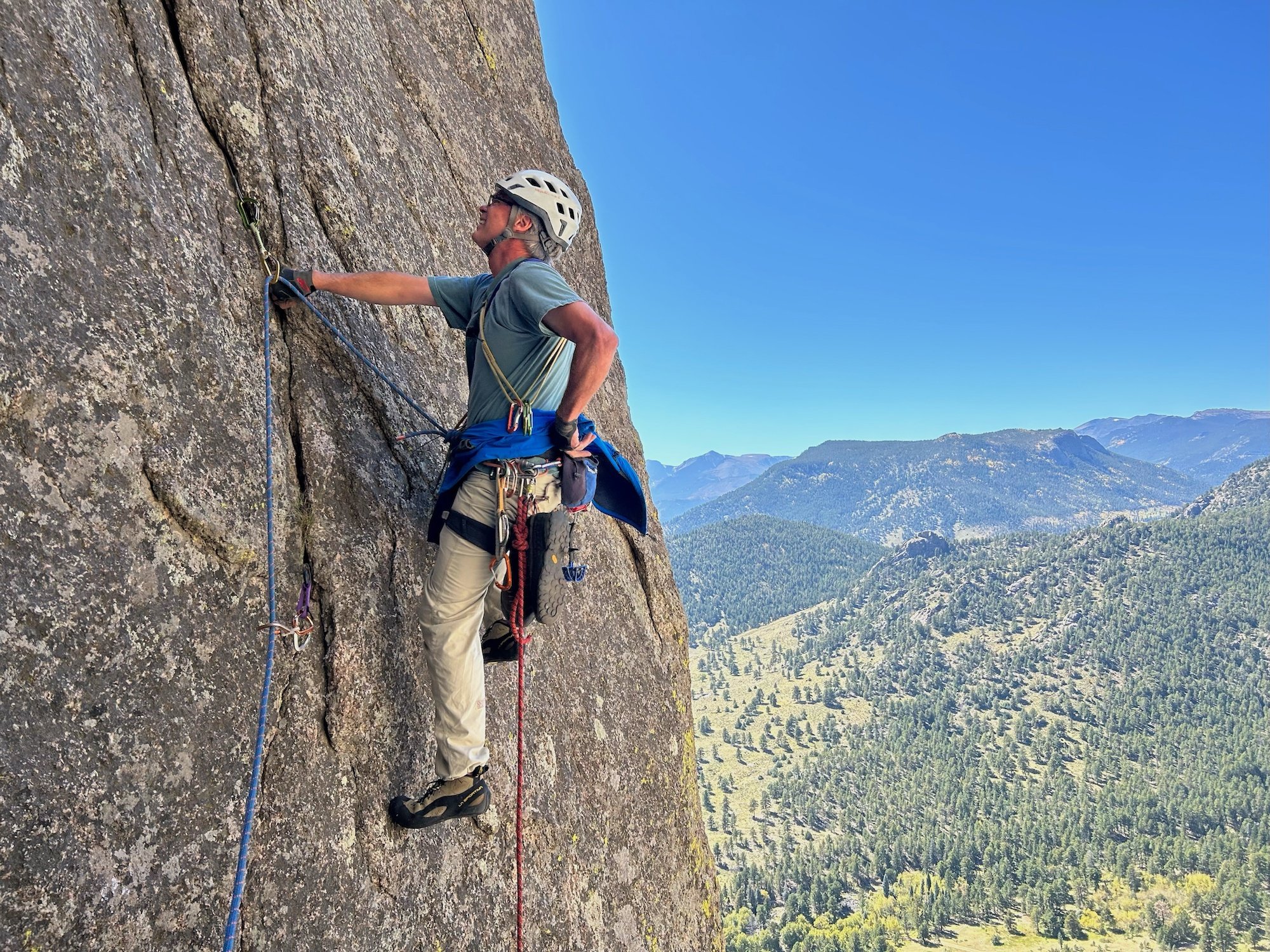Photo by AAC staff Foster Denney.
How would you describe the scope of the work that goes into making the American Alpine Journal (AAJ)?
Dougald MacDonald: Producing the AA J is a year-round effort that involves literally hundreds of people. The actual “staff” of the AAJ (who are all part-timers and volunteers) includes more than 15 people, and each year we work with roughly 300 individual climbers and photographers to share their stories.
The book goes to press in late April, so the peak of the cycle is in March and April. But the work on the following year’s edition starts immediately, plus we prepare and upload online stories all year round. AND we produce The Cutting Edge podcast and the monthly Line newsletter.
What’s the history of the AAJ? How has it changed over the years?
DM: The AAJ is coming up on its 100th birthday, and unsurprisingly it has changed quite a lot over the years. It started out as much more of a Club publication, telling the stories of AAC members’ adventures. In the 1950s, with the rise of Himalayan climbing, the book started to become much more international. But it was really Ad Carter—who edited the AAJ for 35 years, starting in the 1960s—who created the wide-ranging, international publication it is today. We no longer focus mostly on the activities of AAC members—though we’re very happy to tell those stories when we can—but instead try to document all significant long routes and mountain exploration anywhere in the world, by climbers from every country.
For both the AAJ and Accidents in North American Climbing (ANAC), the most significant changes of the last 10 to 15 years have been 1) the introduction of color photography throughout both books and 2) the launch of the searchable online database of every AAJ and ANAC article ever published.
Dougald questing off in Lumpy Ridge, Rocky Mountain National Park, CO. Land of the Cheyenne people. Photo by AAC member and former AAJ senior editor Kelly Cordes.
What’s an example of a unique challenge the editors have to deal with when making the AAJ?
DM: One challenge is that we come out so long after many of the climbs actually happened. So, readers may have seen something about any given climb several times, in news reports and social media posts and even video productions. But the AAJ has never been in the breaking news business. Instead, we aim to provide perspective and context. Perspective in that we don’t have any vested interest that might slant a story one way or another, and context on the history and geography that helps readers really understand the significance of a climb, how it relates to what’s been done before, and what other opportunities might be out there. Another big challenge is language barriers, since we work with people from all over the world. We’re fortunate to work in English, which so many people around the world use these days. We also use skilled translators for some stories, and online translation tools have improved dramatically in recent years. But there’s still a lot of back-and-forth with authors to ensure we’re getting everything just right.
What’s an example report that was really exciting for you to edit from the last few years?
DM: For me, personally, the coolest stories are the ones that teach me about an area of the world—or a moment in climbing history—that I knew nothing about before starting to work on a story. In the upcoming book, for example, we have stories about winter climbing in Greece (who knew?) and a mountain range in Venezuela that’s gorgeous and has peaks over 16,000 feet. Unfortunately, that range is rapidly losing its snow cover and its small glaciers. AAJ senior editor Lindsay Griffin, who is editing the story, did some cool climbs in the range in 1985, and the difference between his photos and those from today is shocking.
Are there any big differences in process between making the AAJ and ANAC?
DM: The biggest differences are just the scale and scope of the two books: The AAJ is a nearly 400-page book that tries to cover the entire world, and ANAC averages 128 pages and focuses on North America. There’s also a sense of starting from scratch on lots of AAJ reports, since the mountain or area in question may be entirely unfamiliar to the editor handling a story, whereas most of the accident types are all too familiar. Still, there’s always something new to learn in both books, and that makes the work very interesting and rewarding.
What emotions are you wrestling with when you ultimately send off this book to the printer?
DM: One word: relief! But also a lot of pride for what we accomplish.
Friends of the AAJ and Accidents
The American Alpine Journal and Accidents in North American Climbing are more than publications—they are the home to essential climbing knowledge. The AAJ is the sport’s definitive collection of cutting-edge climbing reports, and Accidents is the most in-depth accident analysis available to the climbing community. These publications are some of our most treasured member resources, and YOU make them possible!
By joining Friends of the AAJ and Accidents, you ensure these essential educational tools continue to inform and inspire climbers everywhere.
With a designated gift of $250 or more, you’ll be recognized as a key supporter with your name printed in the corresponding 2026 publication—publicly demonstrating your commitment to the climbing community. Friends of the AAJ also receive a signed hardcover edition of the book! When making your gift, please denote which publication you are supporting. Questions? Reach out to the team at [email protected].
Your support makes these world-renowned books possible every year! Go above and beyond for climbing inspiration and education today!




